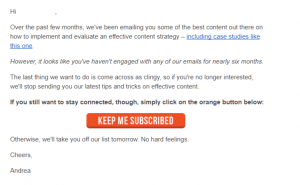The “holiday rush” for buying gifts and gadgets for our loved ones (and, let’s face it, ourselves) is getting bigger every year. Holiday sales are expected to grow this year, with a 13.3 percent increase in e-commerce retail sales in particular.
Not only is the online shopping space growing, but it’s even taking up more days on the calendar: Some Black Friday and Cyber Monday sales will start in the days leading up to Thanksgiving. In some ways, this lessens the burden to deliver loads of orders in a short time period.
On the other hand, all the basics of a good online shopping experience—free shipping, free returns, picking up in-store, no delays, outstanding customer service—are now expected, if not year-round, then at least from October into late December. And don’t forget the most important issue of all: Having enough of your product in stock when customers come looking for it. There may be no bigger blow to an emerging business than lacking inventory, especially during the holidays.
As we head into the heart of holiday shopping season, more people than ever will need their products rushed to them. But again: In this day and age, they’ll want their purchases at low prices, in good condition, ready to shipped back if necessary and accompanied by a seamless shopping experience. Here are six tips to make sure your inventory is ready for the holiday rush this season.
- Update and review your inventory management software
Let’s get this out of the way first: If you don’t have an automated inventory management system, you’re not doing it right. Some small and medium-sized businesses are still tracking their inventory by hand, which if you plan on selling through multiple channels (more on that later) is just about impossible to do effectively and in a way that won’t drive employees nuts.
There are a variety of inventory management systems on the market today that are based on a number of technologies, including RFID and barcode-based systems that make knowing how much inventory you have on hand, how much you’ll likely need for the future based on past surges and falls, what’s on its way to customers and what needs to be re-ordered (or not) right away—or better yet, automatically re-ordered when stock is low. Good inventory management makes almost every other tip on this list more manageable and more cost-effective.
Note: If you’re due to upgrade your system with new software, be sure to do it ahead of time so your team can familiarize themselves with changes, and/or seasonal employees can be brought up to date before the rush.
- Estimate demand using past years’ data and consumer trends
As mentioned above, your inventory management system can track how your products sold in past years, and use that to estimate how much inventory to keep on hand. The answer for having enough inventory isn’t to just order a ton, way more than you might need, in order to avoid a stock-out: The carrying costs of inventory are high, and moving unsold inventory at discounted prices after the rush usually means selling them for a loss. Overstocking and out-of-stocks accounted for $ 1.1 trillion in lost revenue for retailers, according to a study released last year from IHL Group.
Another tool to use is monitoring social media, reviews and comments to see what consumers are and will be clamoring for in the coming weeks. Combining instant retail feedback from real people with historical trends will go a long way towards meeting demand.
- Prepare your warehouse and other areas of the supply chain to scale up
One of the carrying costs of inventory is space on the warehouse shelves, and you’ll need to set aside the right amount of space in case of a surge in demand. Prepare all aspects of your supply chain to scale up to meet the needs of your customers, whether that’s renting additional space, hiring temporary workers or upgrading your barcode scanners to work wirelessly, via Bluetooth.
- Sell your products on multiple channels and track sales with inventory management
If you’re trying to maximize the potential of hot sellers, there are a number of great third-party channel options for selling your products, including Amazon and Etsy, and branded shopping cart sites like Shopify. Data from Stitch Labs shows that sellers who have a shopping cart solution and two marketplaces make 190 percent more in revenue than those with just a single cart.
A diverse lineup of outlets for selling products is great for the bottom line, but tracking sales and ensuring inventory for all buyers is complex without inventory management. Nothing kills a customer’s buzz like ordering an item, only to be told fulfillment is impossible due to a stockout. Most shopping cart applications allow you to alert customers of “low stock” or “out of stock” notes that keeps things transparent and avoids negative feedback.
- Don’t rely too heavily on “just in time” logistics solutions
Some last-minute rush orders are bound to come through the door, but promising two-day or same-day delivery for every item is a big promise that relies on the efficacy of third parties like logistics and transportation companies. And the more links in your supply chain, the higher the possibility is for errors that prevent timely shipping.
This problem isn’t limited to small sellers: Amazon, the leader in ecommerce (particularly during the holidays), stakes its name on fast and inexpensive shipping, but often deals with criticism due to the inability of services like UPS to keep up with demand. They took major losses last year and had to make changes to its warehouse policies for third-party sellers this year as a result. Plan ahead as much as possible.
- Consider a cash infusion to help supplement your holiday fund
It’s easier than ever to apply for and receive working capital through alternative lenders, whether that funding comes through a business loan, a line of credit, invoice factoring or another service. Extra capital on hand can come in handy if there’s a sudden need to hire extra workers, enlist the help of another shipping channel, or pay for a digital marketing campaign. Borrow wisely, of course, but if an investment right away will pay dividends by means of increased sales and improved fulfillment, it’s something to consider.
Remember: When it comes to inventory, the key to success is a quality inventory management system that gives you the power of data. From there you can see what your inventory levels should be, how to prepare your supply chain, how to sell across multiple channels for maximum profit, and how to avoid extraneous costs and negative reviews. That’s how you win the holidays.
Business & Finance Articles on Business 2 Community(150)





